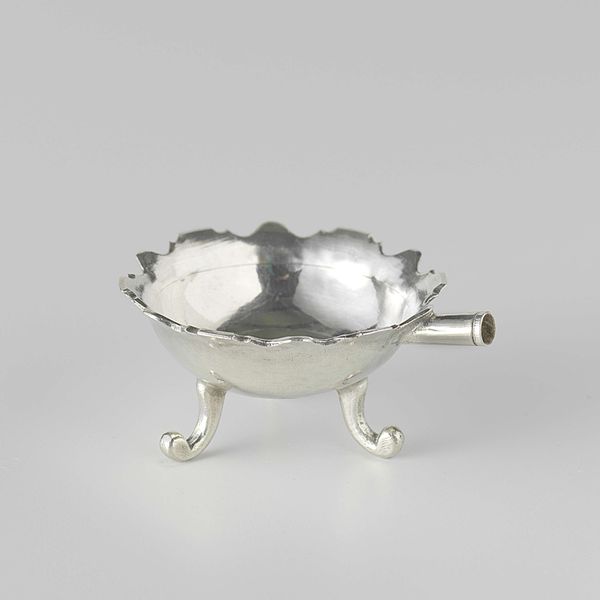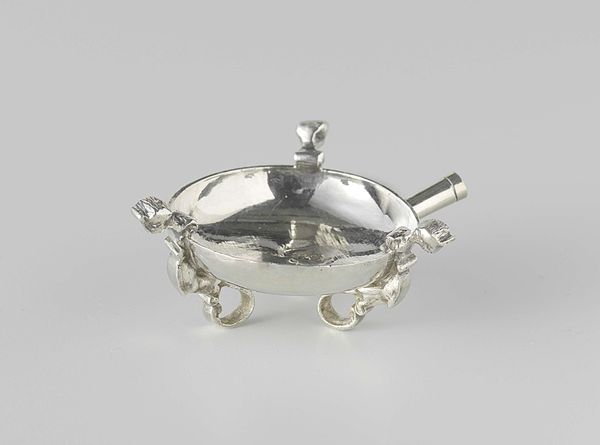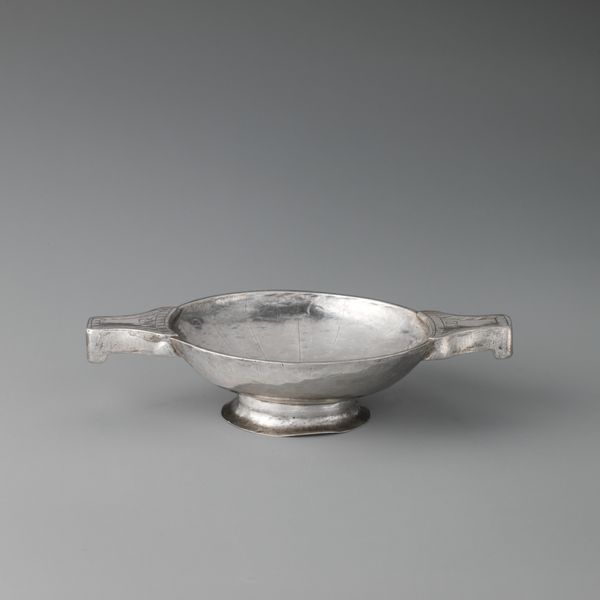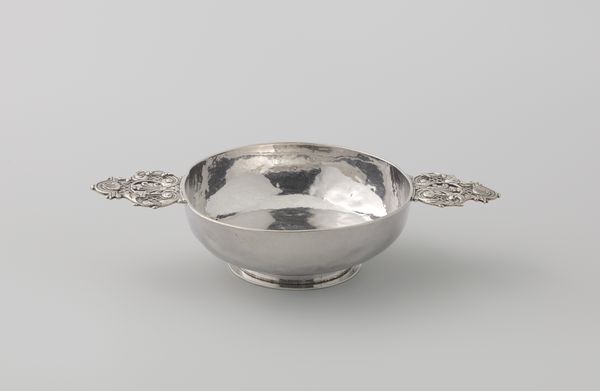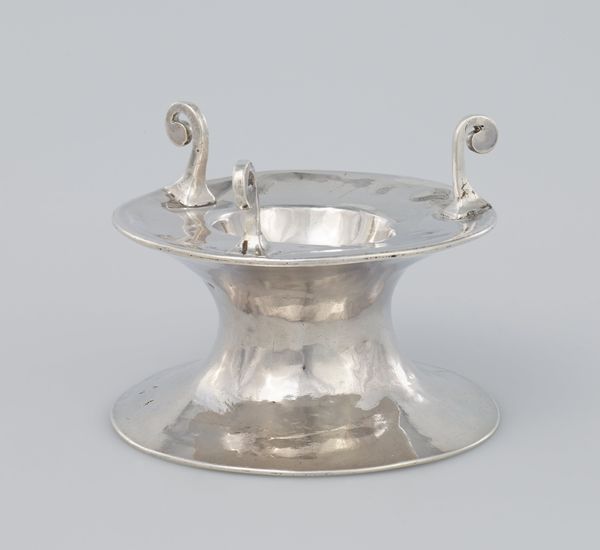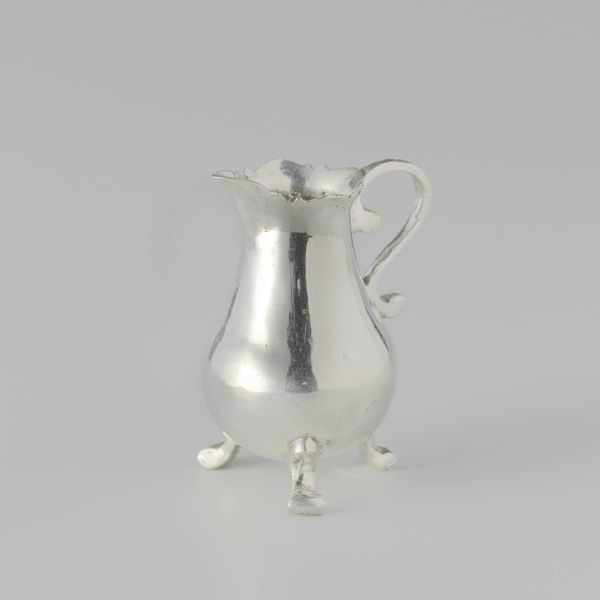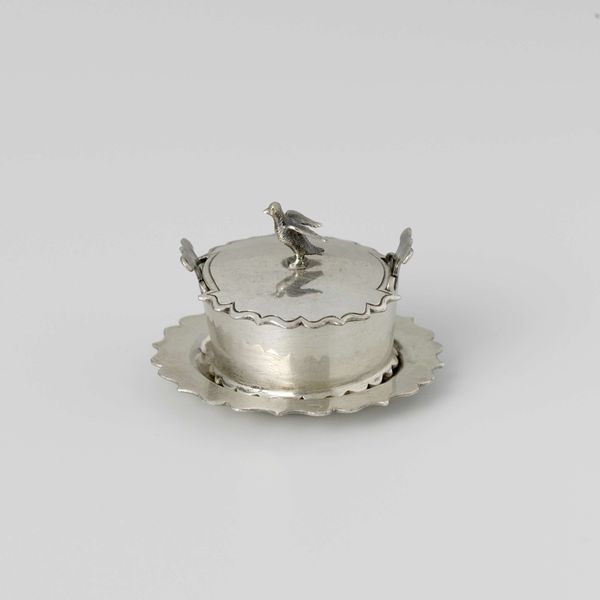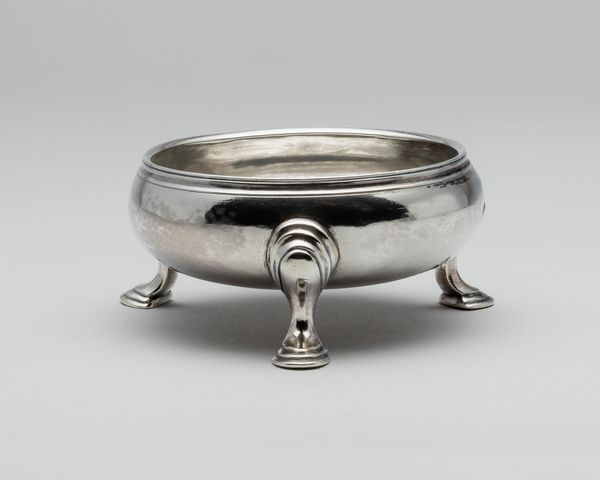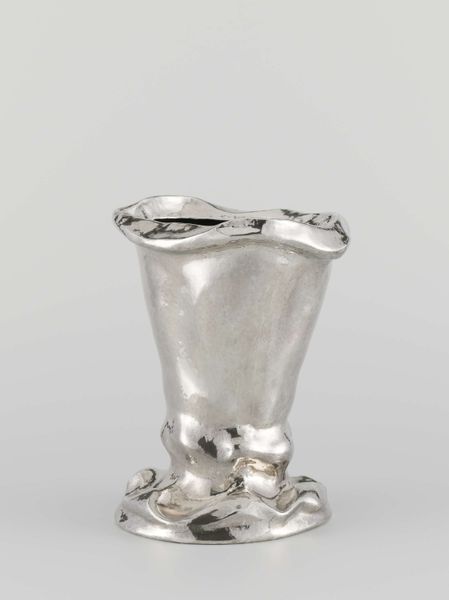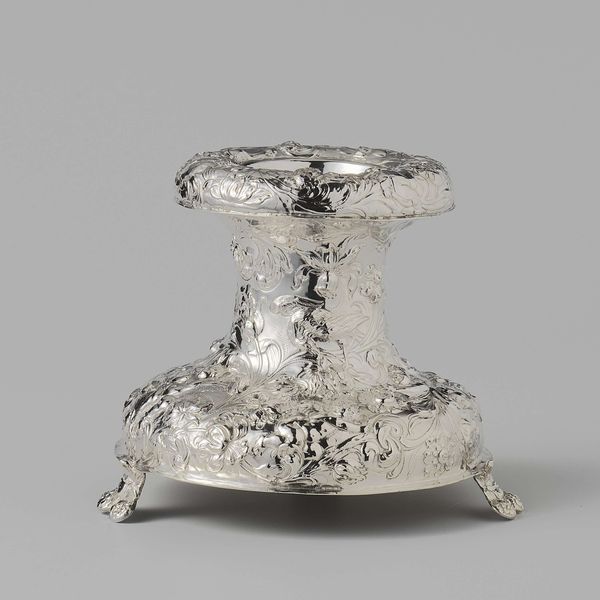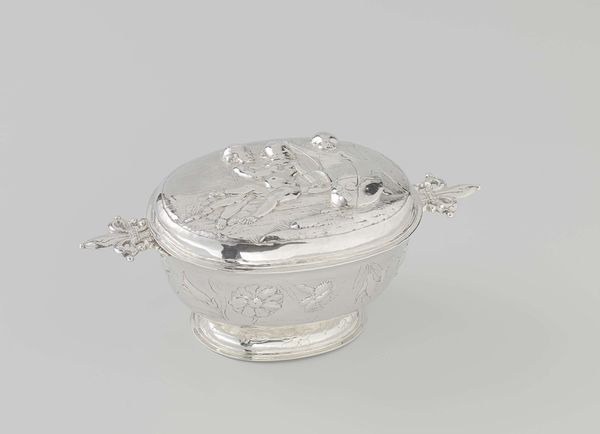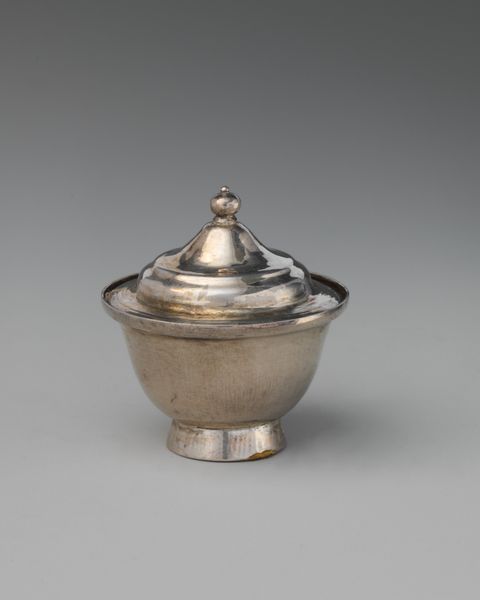
metal
#
baroque
#
metal
#
decorative-art
Dimensions: height 2.2 cm, length 4.6 cm, diameter 3.9 cm
Copyright: Rijks Museum: Open Domain
Curator: Take a look at this striking artifact, a metal tabakskomfoor crafted around 1754 by Jan Borduur. Editor: My first thought is how dainty it is, almost like a miniature silver carriage or an elaborate doll's dish. The reflectivity of the metal is lovely too. Curator: Exactly! The komfoor’s small scale hints at its intended use— likely for heating tobacco. We have to think about it in terms of function, as a highly specific instrument that speaks volumes about 18th century practices of leisure and the material culture that accompanied them. The craftsmanship reveals much about the networks of artisans and workshops dedicated to creating refined commodities. Editor: That it was for tobacco interests me. Tobacco in the 18th century was heavily entwined with colonial economies and deeply problematic labor practices, so this luxury object takes on a darker cast, doesn’t it? Curator: Precisely. What seems purely decorative or quaint to us now needs to be understood within those complex global exchanges of goods and exploitative labor systems. Even something this small carries that weight. Also, note how its three ornamental feet lift it slightly above the table. That separation elevates its status, physically embodying hierarchy. Editor: Good point. And beyond the specific realities of tobacco, its precious metal also suggests social stratification. Someone possessed of wealth would have used this; a signifier of status inseparable from its colonial context. It asks: who benefitted from these refined consumer objects? Curator: It's interesting how, in looking at the detail, you start to think about the wider distribution and production systems of the time. Not just the art itself, but the labor of extraction, transformation, and trade. Editor: The item, I believe, embodies how art, even the most decorative kind, can be a locus of powerful questions about gender, race, labor and identity that extend beyond simple aesthetic judgements. It opens the opportunity for broader examination. Curator: Yes, from materiality to networks, we can unravel complex systems through a single object. Editor: It reframes my perspective seeing the tabakskomfoor not just as craft but also as historical evidence.
Comments
No comments
Be the first to comment and join the conversation on the ultimate creative platform.
